-
 Bitcoin
Bitcoin $106,782.3966
-0.72% -
 Ethereum
Ethereum $2,406.7764
-1.16% -
 Tether USDt
Tether USDt $1.0005
0.02% -
 XRP
XRP $2.0918
-1.53% -
 BNB
BNB $644.5785
-0.17% -
 Solana
Solana $141.0925
-0.69% -
 USDC
USDC $1.0000
0.02% -
 TRON
TRON $0.2721
0.18% -
 Dogecoin
Dogecoin $0.1585
-1.26% -
 Cardano
Cardano $0.5497
-1.14% -
 Hyperliquid
Hyperliquid $35.8493
-1.58% -
 Bitcoin Cash
Bitcoin Cash $502.3089
2.20% -
 Sui
Sui $2.7092
3.87% -
 Chainlink
Chainlink $12.8551
-1.85% -
 UNUS SED LEO
UNUS SED LEO $9.0548
0.53% -
 Stellar
Stellar $0.2344
-0.85% -
 Avalanche
Avalanche $17.2676
-0.23% -
 Toncoin
Toncoin $2.8282
0.56% -
 Shiba Inu
Shiba Inu $0.0...01113
-1.14% -
 Litecoin
Litecoin $83.9593
-0.93% -
 Hedera
Hedera $0.1447
0.82% -
 Monero
Monero $306.9022
-2.07% -
 Bitget Token
Bitget Token $4.6358
3.42% -
 Dai
Dai $0.9999
0.01% -
 Ethena USDe
Ethena USDe $1.0001
0.02% -
 Polkadot
Polkadot $3.3211
0.06% -
 Uniswap
Uniswap $6.8775
0.75% -
 Pi
Pi $0.5664
-0.27% -
 Aave
Aave $256.0055
1.28% -
 Pepe
Pepe $0.0...09013
-3.24%
How to generate a SHIB wallet address? Detailed process demonstration
To create a SHIB wallet, choose MetaMask or Trust Wallet, follow setup steps, secure your recovery phrase, and add SHIB to start using your new wallet address.
May 13, 2025 at 08:43 pm
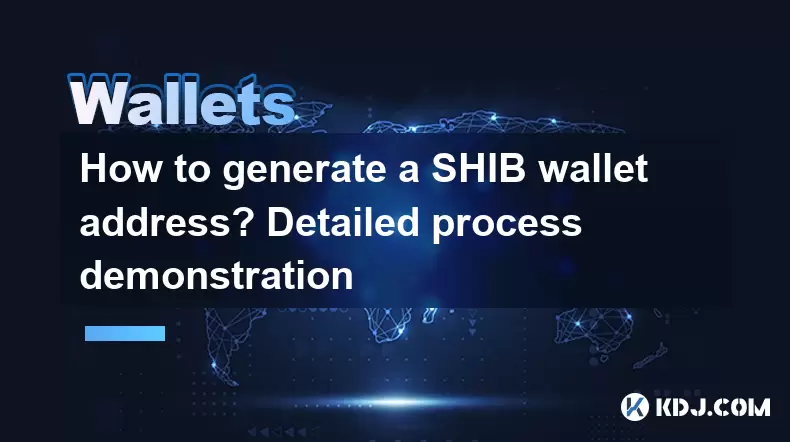
Creating a SHIB (Shiba Inu) wallet address is a straightforward process that allows you to securely store, send, and receive SHIB tokens. This article will guide you through the detailed steps to generate a SHIB wallet address using popular methods such as MetaMask and Trust Wallet. Let's dive into the process.
Choosing a Wallet Platform
Before you can generate a SHIB wallet address, you need to decide on the wallet platform you will use. Two of the most popular options for SHIB are MetaMask and Trust Wallet. Both are non-custodial wallets, meaning you have full control over your private keys and funds.
- MetaMask is a browser extension and mobile app that allows you to interact with the Ethereum blockchain, where SHIB is a token. It's user-friendly and widely used in the crypto community.
- Trust Wallet is a mobile app developed by Binance, supporting a wide range of cryptocurrencies, including SHIB. It's known for its ease of use and security features.
Setting Up MetaMask for SHIB
To generate a SHIB wallet address using MetaMask, follow these steps:
- Download and Install MetaMask: Visit the official MetaMask website and download the extension for your browser or the mobile app from the app store.
- Create a New Wallet: Once installed, click on "Create a New Wallet" and follow the prompts to set up your wallet. You will be asked to create a password and agree to the terms of use.
- Secure Your Recovery Phrase: MetaMask will generate a 12-word recovery phrase. Write this phrase down and keep it in a safe place. This phrase is crucial for recovering your wallet if you lose access.
- Access Your Wallet: After securing your recovery phrase, you will be taken to your wallet dashboard.
- Add SHIB to MetaMask: By default, MetaMask only shows ETH. To add SHIB, click on "Add Token," then "Custom Token." Enter the SHIB contract address (0x95aD61b0a150d79219dCF64E1E6Cc01f0B64C4cE), and the token will be added to your wallet.
- Generate SHIB Wallet Address: Your SHIB wallet address is the same as your Ethereum address in MetaMask. You can find it by clicking on your account name at the top of the MetaMask interface.
Setting Up Trust Wallet for SHIB
To generate a SHIB wallet address using Trust Wallet, follow these steps:
- Download and Install Trust Wallet: Visit the official Trust Wallet website and download the app from the app store.
- Create a New Wallet: Open the app and click on "Create a new wallet." You will be prompted to set a password and agree to the terms of use.
- Secure Your Recovery Phrase: Trust Wallet will generate a 12-word recovery phrase. Write this phrase down and keep it in a safe place. This phrase is essential for recovering your wallet if you lose access.
- Access Your Wallet: After securing your recovery phrase, you will be taken to your wallet dashboard.
- Add SHIB to Trust Wallet: SHIB is already supported by Trust Wallet, so you don't need to manually add it. You can find SHIB by searching in the app.
- Generate SHIB Wallet Address: Your SHIB wallet address is the same as your wallet address in Trust Wallet. You can find it by clicking on the SHIB token and then selecting "Receive."
Verifying Your SHIB Wallet Address
After generating your SHIB wallet address, it's crucial to verify it to ensure you can send and receive SHIB tokens correctly. Here's how to do it:
- Send a Small Amount of SHIB: To verify your wallet address, send a small amount of SHIB to it. You can do this from another wallet or an exchange that supports SHIB.
- Check the Transaction: After sending the SHIB, check your wallet to confirm that the transaction was successful and the SHIB tokens have arrived in your wallet.
- Double-Check the Address: Always double-check the wallet address before sending any significant amount of SHIB to ensure it's correct and you're sending to the right address.
Best Practices for Managing Your SHIB Wallet
To ensure the security and proper management of your SHIB wallet, follow these best practices:
- Keep Your Recovery Phrase Secure: Never share your recovery phrase with anyone or store it digitally. Keep it in a safe, physical location.
- Use Strong Passwords: Use a strong, unique password for your wallet and change it regularly.
- Enable Two-Factor Authentication (2FA): If your wallet platform supports 2FA, enable it to add an extra layer of security.
- Regularly Update Your Wallet: Keep your wallet software updated to the latest version to protect against vulnerabilities.
- Be Wary of Phishing Attempts: Always access your wallet through the official app or website and be cautious of emails or messages asking for your private information.
Frequently Asked Questions
Q: Can I use the same wallet address for other cryptocurrencies?
A: Yes, if you are using MetaMask or Trust Wallet, the same wallet address can be used for other ERC-20 tokens on the Ethereum blockchain. However, for cryptocurrencies on different blockchains, you would need to generate separate addresses.
Q: Is it safe to store large amounts of SHIB in my wallet?
A: It is generally safe to store SHIB in your wallet if you follow best security practices. However, for large amounts, consider using a hardware wallet for added security, as it stores your private keys offline.
Q: Can I generate multiple SHIB wallet addresses with one wallet?
A: Yes, both MetaMask and Trust Wallet allow you to create multiple accounts within the same wallet. Each account will have a unique wallet address that you can use for SHIB and other tokens.
Q: How do I recover my SHIB wallet if I lose access?
A: If you lose access to your SHIB wallet, you can recover it using the 12-word recovery phrase you wrote down during setup. Enter this phrase into the wallet app or extension to restore your wallet and access your SHIB tokens.
Disclaimer:info@kdj.com
The information provided is not trading advice. kdj.com does not assume any responsibility for any investments made based on the information provided in this article. Cryptocurrencies are highly volatile and it is highly recommended that you invest with caution after thorough research!
If you believe that the content used on this website infringes your copyright, please contact us immediately (info@kdj.com) and we will delete it promptly.
- Ruvi AI: The Cardano Successor Delivering Massive ROI Forecasts?
- 2025-06-28 06:30:12
- Ruvi AI: The 100x Bull Run Contender Outshining Binance Coin?
- 2025-06-28 06:30:12
- Moonshot, Memecoins, and Apple Pay: A New Era of Crypto?
- 2025-06-28 06:41:55
- Bitcoin, Energy, and Fed Rate Cuts: Navigating the New Crypto Landscape
- 2025-06-28 06:41:56
- Euro Stablecoins Surge: Can They Outpace the Dollar?
- 2025-06-28 06:41:56
- Bitcoin, Stablecoins, and Treasuries: A New Era of Digital Finance
- 2025-06-28 04:50:12
Related knowledge

How to stake cryptocurrencies on Coinbase? Benefits and risks
Jun 27,2025 at 06:36pm
Understanding Cryptocurrency Staking on CoinbaseStaking cryptocurrencies involves locking up digital assets to support the operations of a blockchain network, typically in return for rewards. Coinbase, one of the most popular cryptocurrency exchanges globally, offers staking services for several proof-of-stake (PoS) coins. Users can stake their holdings...
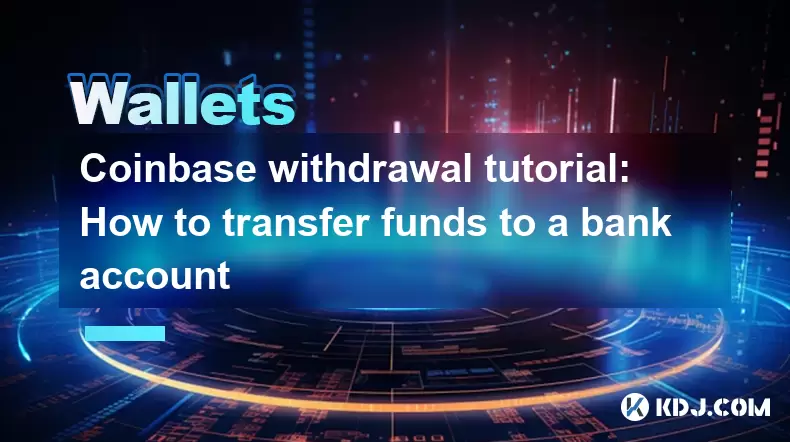
Coinbase withdrawal tutorial: How to transfer funds to a bank account
Jun 28,2025 at 02:35am
Understanding Coinbase WithdrawalsCoinbase is one of the most widely used cryptocurrency platforms, allowing users to buy, sell, and store digital assets. Once you've successfully traded or held your crypto on Coinbase, the next logical step may be to withdraw funds to a bank account. This process involves converting your cryptocurrency into fiat curren...
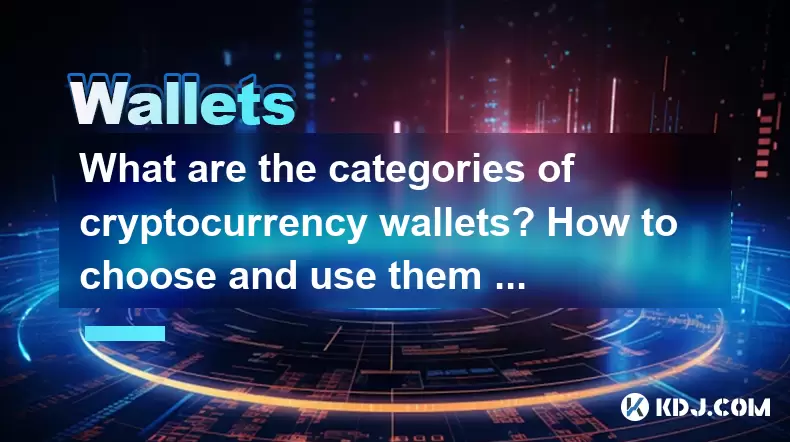
What are the categories of cryptocurrency wallets? How to choose and use them safely?
Jun 21,2025 at 10:42pm
Understanding Cryptocurrency WalletsCryptocurrency wallets are essential tools for anyone involved in the digital asset ecosystem. They allow users to store, send, and receive cryptocurrencies securely. Unlike traditional wallets that hold physical money, crypto wallets manage cryptographic keys—private and public—which interact with blockchain networks...
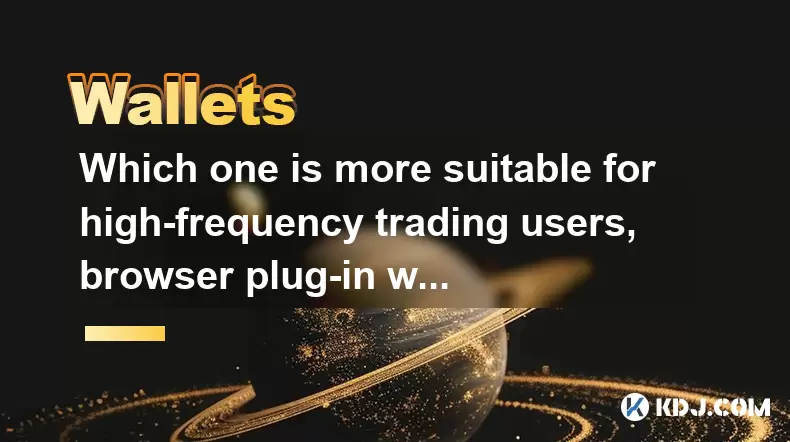
Which one is more suitable for high-frequency trading users, browser plug-in wallets or independent application wallets?
Jun 23,2025 at 08:22am
Understanding the Role of Wallets in High-Frequency TradingFor high-frequency trading (HFT) users in the cryptocurrency market, wallet selection is critical due to the need for speed, security, and seamless integration with trading platforms. HFT involves executing a large number of trades within seconds or even milliseconds, which demands a wallet that...

What are the differences between the operating mechanisms of on-chain wallets and off-chain wallets? Is there a big difference in transaction fees?
Jun 25,2025 at 08:49am
Understanding On-Chain WalletsOn-chain wallets are digital wallets that directly interact with the blockchain network. These wallets store users' private keys, which are essential for signing and authorizing transactions on the blockchain. When using an on-chain wallet, every transaction must be recorded and verified by the decentralized nodes in the ne...
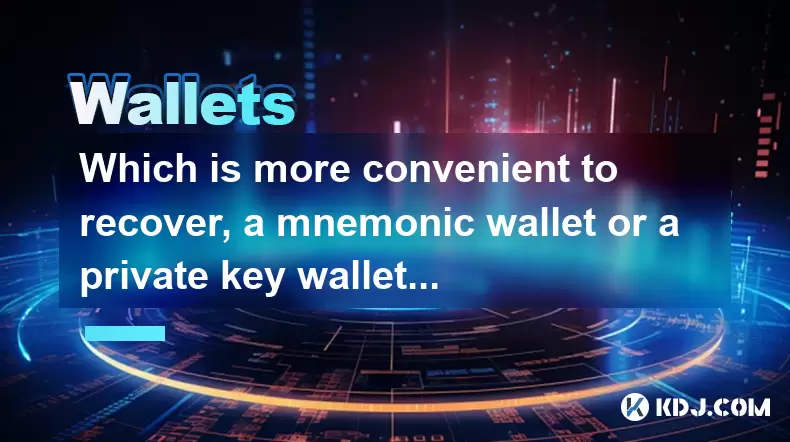
Which is more convenient to recover, a mnemonic wallet or a private key wallet? Will security be compromised?
Jun 20,2025 at 06:36am
Understanding Mnemonic Wallets and Private Key WalletsIn the world of cryptocurrency, wallet recovery is a crucial aspect that users must understand before storing digital assets. Two popular methods for securing and recovering wallets are mnemonic phrases and private keys. Both serve as gateways to access funds, but they differ significantly in terms o...

How to stake cryptocurrencies on Coinbase? Benefits and risks
Jun 27,2025 at 06:36pm
Understanding Cryptocurrency Staking on CoinbaseStaking cryptocurrencies involves locking up digital assets to support the operations of a blockchain network, typically in return for rewards. Coinbase, one of the most popular cryptocurrency exchanges globally, offers staking services for several proof-of-stake (PoS) coins. Users can stake their holdings...

Coinbase withdrawal tutorial: How to transfer funds to a bank account
Jun 28,2025 at 02:35am
Understanding Coinbase WithdrawalsCoinbase is one of the most widely used cryptocurrency platforms, allowing users to buy, sell, and store digital assets. Once you've successfully traded or held your crypto on Coinbase, the next logical step may be to withdraw funds to a bank account. This process involves converting your cryptocurrency into fiat curren...

What are the categories of cryptocurrency wallets? How to choose and use them safely?
Jun 21,2025 at 10:42pm
Understanding Cryptocurrency WalletsCryptocurrency wallets are essential tools for anyone involved in the digital asset ecosystem. They allow users to store, send, and receive cryptocurrencies securely. Unlike traditional wallets that hold physical money, crypto wallets manage cryptographic keys—private and public—which interact with blockchain networks...

Which one is more suitable for high-frequency trading users, browser plug-in wallets or independent application wallets?
Jun 23,2025 at 08:22am
Understanding the Role of Wallets in High-Frequency TradingFor high-frequency trading (HFT) users in the cryptocurrency market, wallet selection is critical due to the need for speed, security, and seamless integration with trading platforms. HFT involves executing a large number of trades within seconds or even milliseconds, which demands a wallet that...

What are the differences between the operating mechanisms of on-chain wallets and off-chain wallets? Is there a big difference in transaction fees?
Jun 25,2025 at 08:49am
Understanding On-Chain WalletsOn-chain wallets are digital wallets that directly interact with the blockchain network. These wallets store users' private keys, which are essential for signing and authorizing transactions on the blockchain. When using an on-chain wallet, every transaction must be recorded and verified by the decentralized nodes in the ne...

Which is more convenient to recover, a mnemonic wallet or a private key wallet? Will security be compromised?
Jun 20,2025 at 06:36am
Understanding Mnemonic Wallets and Private Key WalletsIn the world of cryptocurrency, wallet recovery is a crucial aspect that users must understand before storing digital assets. Two popular methods for securing and recovering wallets are mnemonic phrases and private keys. Both serve as gateways to access funds, but they differ significantly in terms o...
See all articles























































































